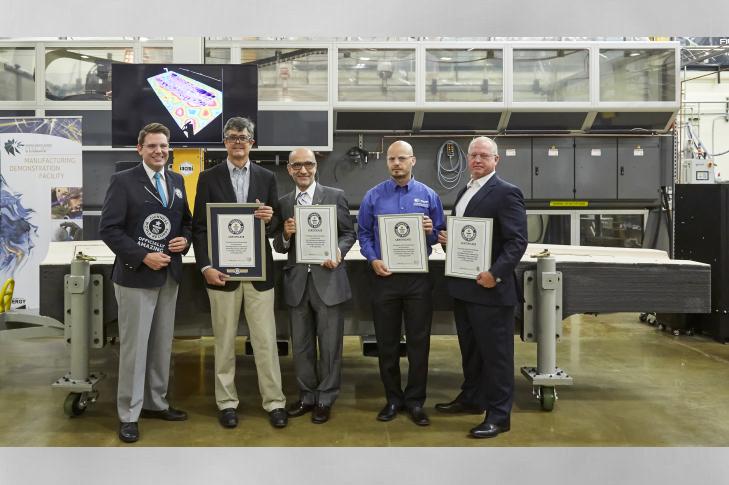A new world record has been set by the Department of Energy’s Oak Ridge National Laboratory (ORNL). Guinness World Records honored the organization for developing the largest solid object ever 3D printed: a trim-and-drill tool to be used in the production of Boeing airplanes.

The tool surely deserves its new title, as it is nearly as long as a sport utility vehicle. Weighing in a 1,650 lbs and printed in only 30 hours, the tool stands at 17.5 feet long, 5.5 feet wide, and 1.5 feet tall. It is made out of low cost carbon fiber and ABS thermoplastic composite materials. Leo Christodoulou, The Boeing Company’s director of structures and materials, said of ORNL’s latest development,
“The existing, more expensive metallic tooling option we currently use comes from a supplier and typically takes three months to manufacture using conventional techniques. Additively manufactured tools, such as the 777X wing trim tool, will save energy, time, labor and production cost and are part of our overall strategy to apply 3D printing technology in key production areas.”
The tool was printed on the laboratory’s Big Area Additive Manufacturing machine and received an official measurement from the Guinness World Records judge Michael Empric. In order to qualify for the records, the tool had to exceed an area of about 10.6 cubic feet, which it ultimately passed with flying colors. “Using 3D printing, we could design the tool with less material and without compromising its function,” said Vlastimil Kunc, leader of ORNL’s polymer materials development team.

The ORNL still has to finish verification testing, after which Boeing will employ the structure at their newest production facility in St. Louis, MO. At the new facility the tool will be used in the assembly of Boeing’s 777X passenger jet, which is scheduled to begin production in 2017 and is targeted for commercial use in 2020. The tool will be used to secure the jet’s composite wing skin for drilling and machining before assembly.
Featured Image courtesy of ORNL



